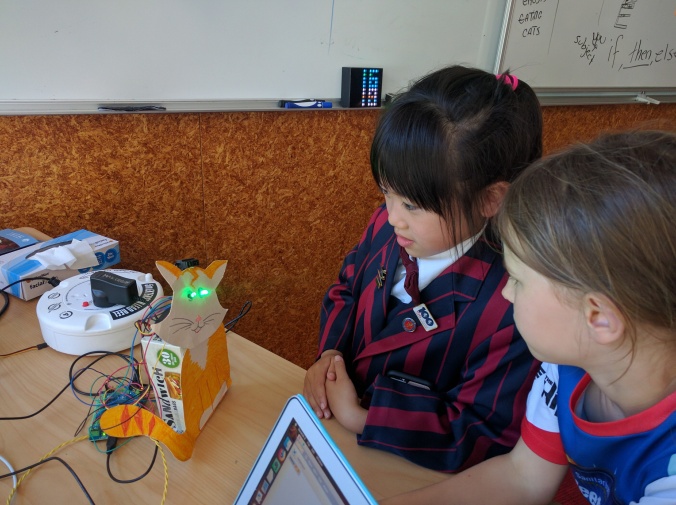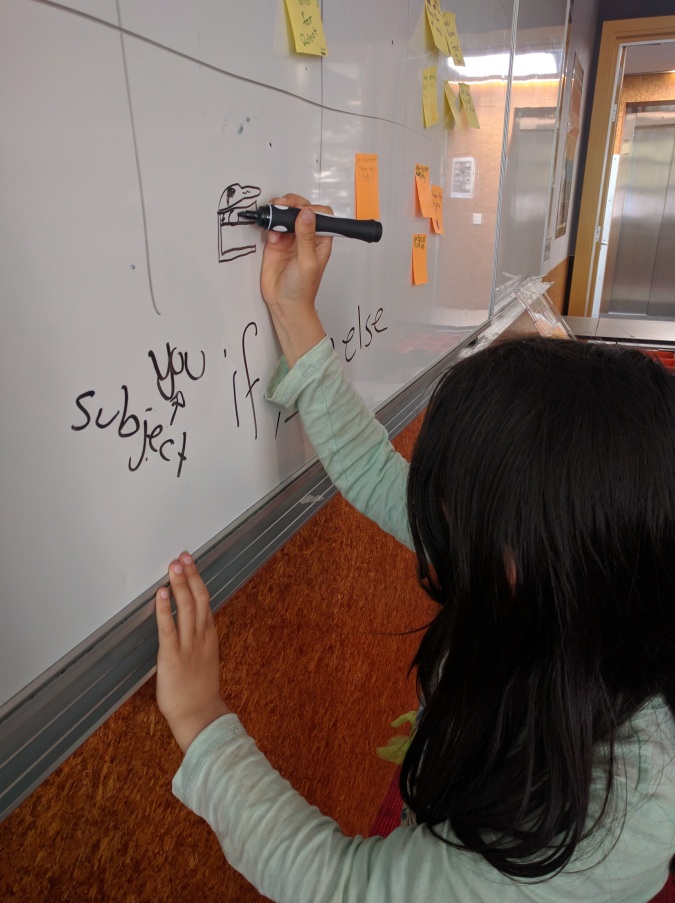Looking back at the past year I realised in some ways I was dictating too much of the creative process to my students in a hurry to make sure everyone was on the same page. I was eliminating the struggle and creative process. MakerBox is all about creativity and learning through doing. Process over product. Mistakes are to be celebrated, ideas to be shared, and obstacles to be overcome.
For Term 4 I set out to get back to the basics. For our very first Recycled Robots project I decided I would introduce the students to the concept and show some examples, but it was up to them to figure out how all the individual components fit together to make a drawing robot. I also brought back the Innovation Board, a space for us to share innovative ideas that we think might be helpful for other students.
On the first day, I was a bit scared. There was a great sense of uncertainty, what if my grand plan didn’t work? Ironically, I was worried about (gulp) failure.
At first the kids were a bit uncertain as well. They approached the supplies table with caution and not much conversation. But eventually they got to work and the end results were amazing! Every single bot was different and the kids came up with many ideas my boring adult brain never would have. Ideas they probably would have never articulated if an adult was walking them through the steps.
Caitlyn had the idea to use straws to hold markers on for easy removal and switching of colours. She cut straws to size, then made a straight cut, she then hot glued the straws onto her robot.
Other students saw this idea and decided to replicate it. Natalie found the straw was too small to hold the thick marker she wanted to use, so she remixed Caitlyn’s idea by wrapping a pipecleaner around the pen then hot gluing it to her robot.
The best part was during reflection time at the end. One student would say something about what didn’t work and how they fixed it and their peers would chime in with an “oh yeah!” or “that happened to me too!” The students were listening and engaging with what their classmates were saying and learning in the process.
During the second session I had to return to my teacher role so the kids understood how to connect the Hummingbird and components together, then code an LED using Scratch. There was a bit of self-discovery, but it was more structured then the previous week.
In the third week though, I made an active decision to focus on facilitation over lecture. I told students they were going to learn about three more types of output: motors, servos, and tri-colour LEDs, but I wasn’t going to tell them how to code these components or what they did.
As a class we quickly reviewed how to plug the components into the Hummingbird brain, then they were off!
It was amazing! Every group ended up coding their components in 30 minutes or less. The servo tripped everyone up the most, “It worked once, but then it stopped! Everything else is still working though”, one group remarked. After some careful questioning, “So you told it to go to 70°, then what?” they all realised the servo was now at their chosen angle and couldn’t go there again until they told it to go somewhere else. They immediately set to work, remedying the problem.

Students interact with teacher-made robot to determine how it works
In later weeks sensors were a trickier component to understand. Sensors are different from output. Output is the way a robot reacts, a simple action, but sensors are how a robot gets input from the world around it. To code a sensor requires a bit of maths and a lot of logic.

Student draws code blocks needed for “if, then, else” statement
To add sensors to their robots the students had to know how to use greater than, less than, as well as if, then, else statements. We played multiple games to help us understand how robots respond to sensor input.
In the end, Recycled Robots 2017 was a complete success. The kids explored with more passion and even learned how to manage themselves in groups. By giving students the opportunity to learn new things for themselves and share with others discoveries were more personal and creativity was at it’s highest. I can’t wait to see what this creative bunch will get up into the future.
I’m excited for what 2018 will bring, starting with the revamped Game Design Adventures.

























